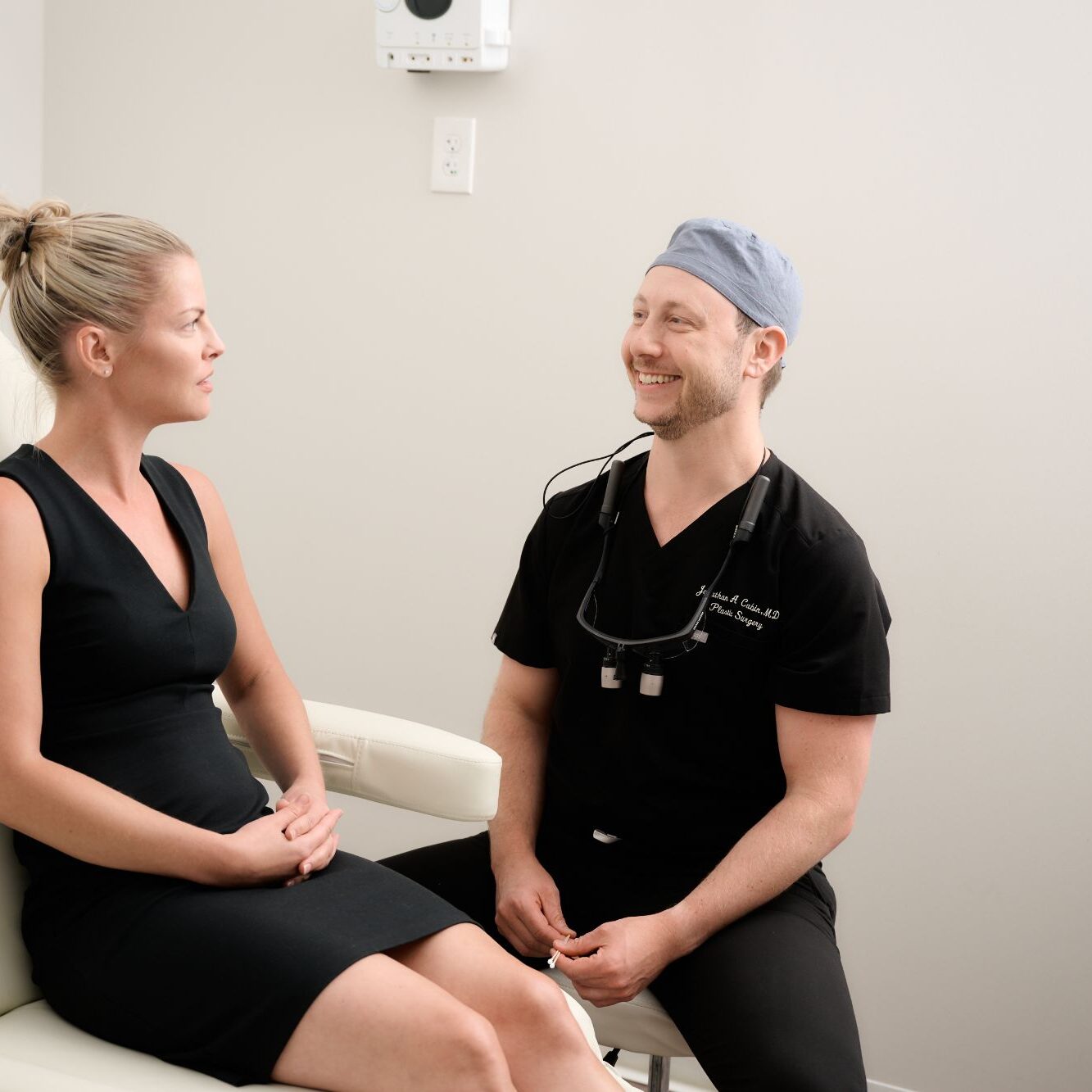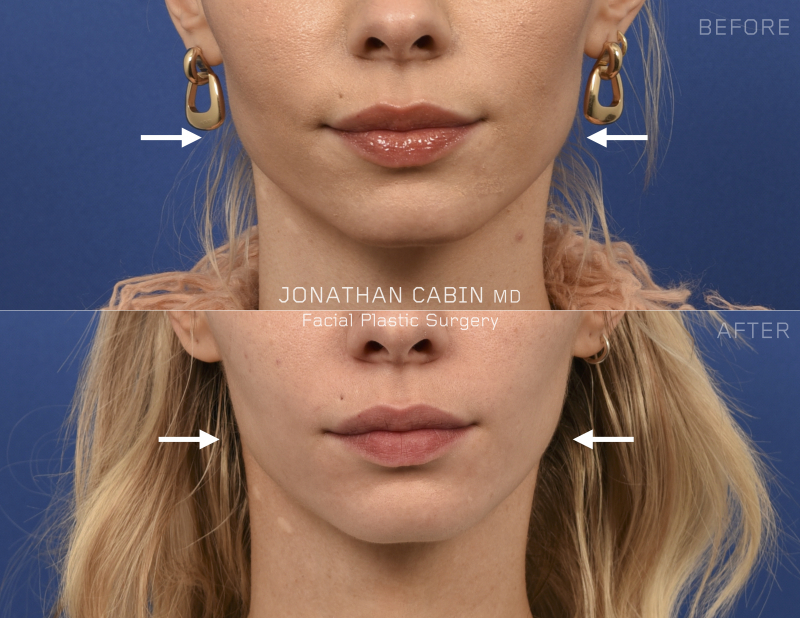Facial Slimming | Washington, D.C., & Arlington
Define Your Look
If you’re self-conscious about the shape of your face, facial slimming treatment with Dr. Cabin can help you remove excess fat and muscle from your neck, jawline, and areas of your face to give you the contoured, streamlined look you want.
What Is Facial Slimming?
Facial slimming is a quick, minimally invasive, non-surgical procedure to get you the sculpted, refined facial structure you want.
Dr. Cabin uses neurotoxin injections to selectively target specific muscles causing your face to look bulky or full. By strategically injecting these neurotoxins into the right areas, he can help you get a slimmer, more defined facial shape.
How Does Facial Slimming Work?
Your overly squared jaw and overall bulky facial structure may result from one of two factors:
- Excess fat deposits
- Overly developed chewing (masseter) muscles
During your consultation, Dr. Cabin will assess your unique facial structure and discuss your goals with you. He’ll identify the muscles contributing to your rounded or bulky appearance and create a customized treatment plan tailored to your needs and goals.
The neurotoxin injections work by temporarily relaxing these facial and neck muscles, reducing their activity and subsequently diminishing their size. This results in a smoother, more streamlined facial profile.
Using injectables like neurotoxins to slim your face is a quick and minimally invasive procedure that requires little to no downtime. You can expect to see gradual changes over the course of a few weeks as the muscles gradually weaken and your face becomes noticeably slimmer.
Dr. Cabin's expertise in this technique ensures that your results will appear natural, allowing you to enjoy a more refined and contoured look while preserving your individual features.

How Facial Slimming Treatment Helps
Facial slimming with Dr. Cabin is a versatile technique that can address various concerns and enhance your facial contours. Here are three common treatment areas where this approach can provide effective results:
Excess Fat Deposits
If you have areas of your face with stubborn pockets of fat that create a fuller or rounder appearance, facial slimming with neurotoxins can help.
By strategically injecting neurotoxins into specific muscles, Dr. Cabin can reduce the activity of these muscles, leading to a gradual reduction in the size of the fat deposits. This results in a more streamlined and contoured facial profile, giving you a slimmer look.
Overdeveloped Masseter Muscles
Over time, the masseter muscles along your jawline can become overdeveloped due to factors like teeth grinding or clenching. This can lead to a square or bulky jawline appearance.
Neurotoxin injections can target these muscles, causing them to relax and gradually reduce in size. This not only helps you get a more oval and balanced face shape, but it also adds a touch of femininity to your overall look.
TMJ Pain
Temporomandibular Joint (TMJ) disorder can cause pain and discomfort in your jaw, leading to clenching and teeth grinding.
Neurotoxin injections can alleviate these symptoms by relaxing the jaw muscles responsible for these actions. By doing so, facial slimming with neurotoxins can provide relief from TMJ-related issues, promoting comfort and improved jaw function.
Results
Check out how Dr. Cabin's expertise has helped his other patients from Washington, D.C., Arlington, and across the country to revitalize their appearance and get the streamlined, balanced facial structure they desire with facial slimming treatments.
See More
Why Choose
Dr. Cabin?
Facial slimming with neurotoxins is a non-surgical method to reshape your face. By targeting excess fat deposits, relaxing overdeveloped masseter muscles, or addressing TMJ disorder, Dr. Cabin can help you get a more balanced, well-proportioned facial appearance.
As an industry-leading facial rejuvenation expert, Dr. Cabin's goal is to bring out your natural beauty by enhancing your facial features with the most minimally invasive procedures. With precise injections and a customized approach, he ensures that your facial slimming treatment achieves a well-proportioned and attractive look.


Facial Slimming Recovery
After your facial slimming treatment, you can expect a relatively simple and comfortable recovery process. Most patients experience minimal downtime, so you can quickly resume your daily activities. Some mild tenderness or bruising at the injection sites is possible, but these effects usually subside within a few days.
The full, natural-looking results of your facial slimming procedure become gradually noticeable over the course of several weeks.
As the neurotoxins take effect and the targeted muscles relax, you’ll start to observe the slimming and contouring effects on your treated areas. Your face will appear more refined and proportionate—without compromising your natural expressions.
